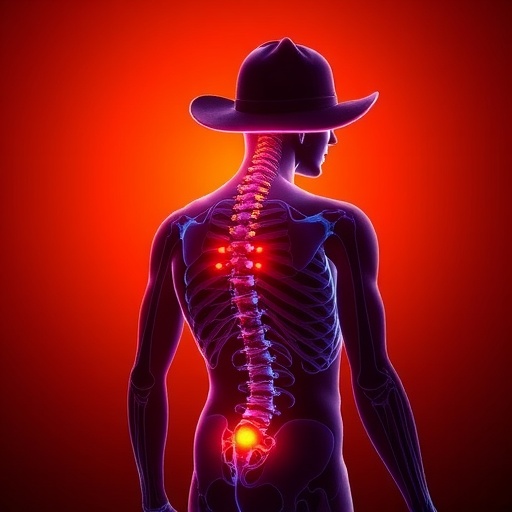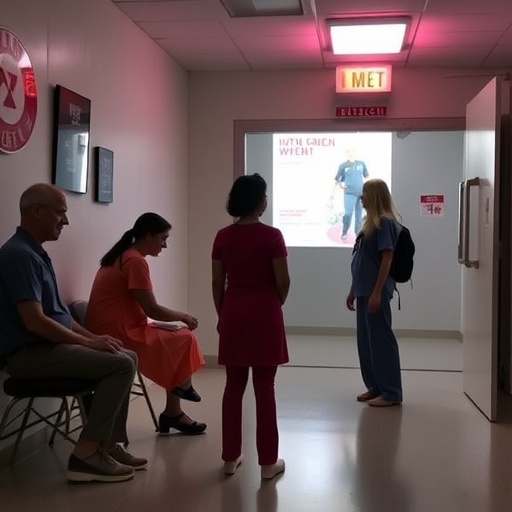In a groundbreaking development within the field of biomedical engineering, researchers led by Steger et al. have introduced a novel electromagnetic impactor designed to revolutionize spinal cord injury research. Their study, which stands to impact the trajectory of preclinical testing significantly, focuses on addressing longstanding challenges in achieving consistency and precision in animal models, particularly using porcine subjects. By establishing a reliable method for inducing spinal cord injuries, the researchers aim to propel the development of therapeutic interventions and improve patient outcomes.
Spinal cord injuries present complex biological challenges and often result in debilitating consequences for patients. Historically, research efforts have been hindered by a lack of standardized models, leading to variability in the results. This variability complicates the translation of findings from animal studies to human applications. Steger and his colleagues have recognized this critical gap and taken a decisive step forward by engineering an impactful solution. Their electromagnetic impactor is poised to create a more consistent and repeatable model that may accelerate progress in the understanding of spinal cord injuries and the design of potential treatments.
The electromagnetic impactor operates on a principle of precision that ensures uniform delivery of mechanical force to the spinal column. This controlled mechanism allows for exact measurements of the degree of injury inflicted upon the model organism, which in this case, is the pig. By employing this innovative tool, researchers can simulate injury scenarios that closely mimic human conditions. This enhanced reproducibility is essential for validating preclinical results that could eventually lead to novel therapeutic strategies aimed at spinal cord repair and recovery.
One of the key advantages of the new electromagnetic impactor is its versatility. It allows researchers to manipulate various parameters such as velocity, force, and angle of impact. These factors are crucial in studying the complex pathophysiology of spinal cord injuries. By simulating different injury profiles, the research team can obtain data that reflect a range of potential outcomes. This granularity of detail not only enriches the scientific understanding of spinal cord trauma but also lays the groundwork for targeted therapeutic approaches.
The implications of this research extend far beyond the laboratory. With a reliable porcine model at their disposal, researchers can evaluate novel pharmacological agents and investigate emerging technologies responsible for spinal cord regeneration. The potential for accelerated clinical trials is immense, as insights gleaned from these studies can guide the development of therapies aimed at restoring motor function and alleviating the burdens associated with spinal cord injuries.
In addition to enhancing research outcomes, the novel electromagnetic impactor addresses ethical considerations in animal research. The traditional methods of inducing spinal cord injuries often resulted in severe trauma to the animals, raising concerns about their welfare. The precision offered by the new impactor minimizes collateral damage, thereby adhering to humane practices. With a focus on ethical experimentation, researchers can conduct their studies responsibly, which is crucial in the context of increasing scrutiny on animal research practices.
Furthermore, the innovations presented by Steger et al. underscore the importance of interdisciplinary collaboration in advancing biomedical engineering. The development of the electromagnetic impactor involved contributions from engineers, biologists, and medical professionals, exemplifying how collective expertise can lead to solutions that tackle complex healthcare issues. This team approach not only magnifies the potential for future breakthroughs but also sets a precedent for collaborative efforts to address various challenges in medical research.
As spinal cord injury research evolves, it is essential to integrate technological advancements that promote reproducibility and precision. The electromagnetic impactor promises to shift the paradigm toward a more standardized and scientifically rigorous approach to preclinical studies. By producing consistent injury profiles and establishing a comprehensive dataset, the research holds the potential to transform therapeutic development, ultimately benefiting patients suffering from spinal cord dysfunction.
Moreover, the introduction of this device into spinal research holds promise for understanding the broader implications of trauma on the nervous system. By generating varied injury models, researchers may elucidate the complex interactions between cellular mechanisms, inflammation, and regeneration. This knowledge may pave the way for interventions that not only mitigate the damage sustained during injury but also stimulate recovery processes after spinal cord trauma.
In summary, the study by Steger and his team represents a significant milestone in spinal cord injury research. The introduction of the electromagnetic impactor not only promises to enhance the precision of preclinical models but also serves as a testament to the importance of collaboration in scientific advancement. As the field of spinal cord injury research continues to unfold, the findings from this study could inspire further innovations and therapeutic discoveries, ultimately improving the quality of life for countless individuals affected by these injuries.
As investigators look to the future, the potential applications of this new technology extend beyond spinal cord injuries. Similar methodologies may be applied in other areas of research where precise mechanical impact is necessary for studying tissue response to trauma. By refining the tools available to researchers, the work of Steger et al. paves the way for future advancements that could resonate across multiple domains in biomedical science.
The commitment to improving animal models is a cornerstone of ethical research practices, and the development of this electromagnetic impactor reflects that ethos. Researchers must continuously seek ways to enhance the validity and reliability of their studies while prioritizing the welfare of animal subjects. The journey toward solving the complexities of spinal cord injuries is ongoing, but innovations such as the one introduced by Steger and his team signal a brighter future for research in this critical area.
In conclusion, the promise held by the novel electromagnetic impactor is far-reaching. As researchers incorporate this tool into their studies, it will undoubtedly contribute to a more refined understanding of spinal cord injuries and inspire new avenues for therapeutic development. This research exemplifies the power of innovation in biomedical engineering and its potential to transform countless lives affected by spinal cord injuries.
Subject of Research: Spinal cord injury research using a novel electromagnetic impactor for porcine models.
Article Title: Precision in Spinal Cord Injury Research: A Novel Electromagnetic Impactor for a Consistent Porcine Model.
Article References:
Steger, L., Ghaith, A.K., Weber-Levine, C. et al. Precision in Spinal Cord Injury Research: A Novel Electromagnetic Impactor for a Consistent Porcine Model.
Ann Biomed Eng (2025). https://doi.org/10.1007/s10439-025-03836-6
Image Credits: AI Generated
DOI: 10.1007/s10439-025-03836-6
Keywords: Spinal Cord Injury, Electromagnetic Impactor, Preclinical Models, Biomedical Engineering, Animal Research.
Tags: biomedical engineering advancementschallenges in spinal cord injury researchconsistency in animal modelselectromagnetic impactor for spinal injury researchenhancing patient outcomes through researchimproving translational research in medicinemechanical force delivery in spinal studiesporcine subjects in researchpreclinical testing innovationsspinal cord injury modelsstandardized models in biomedical researchtherapeutic interventions for spinal injuries





